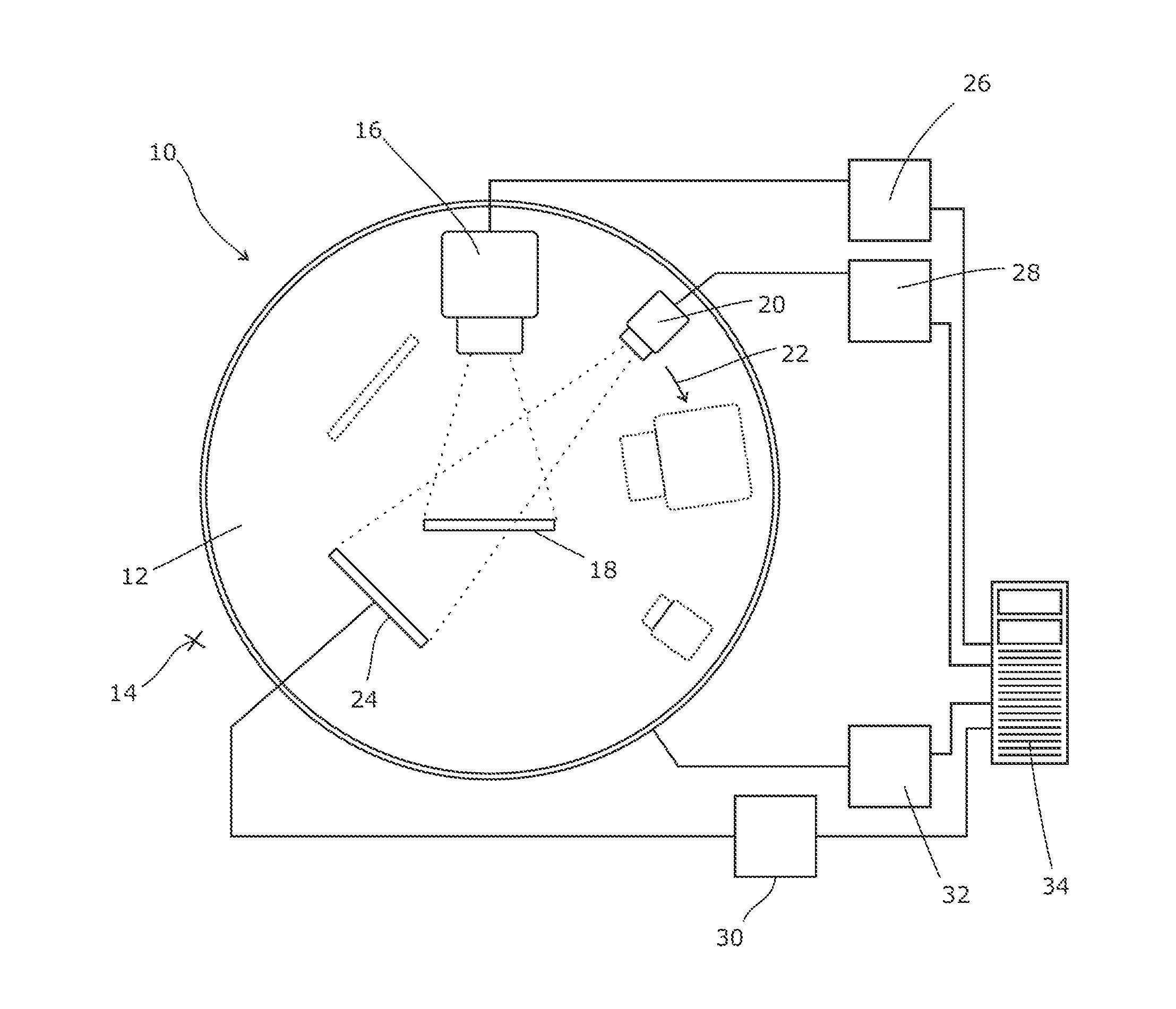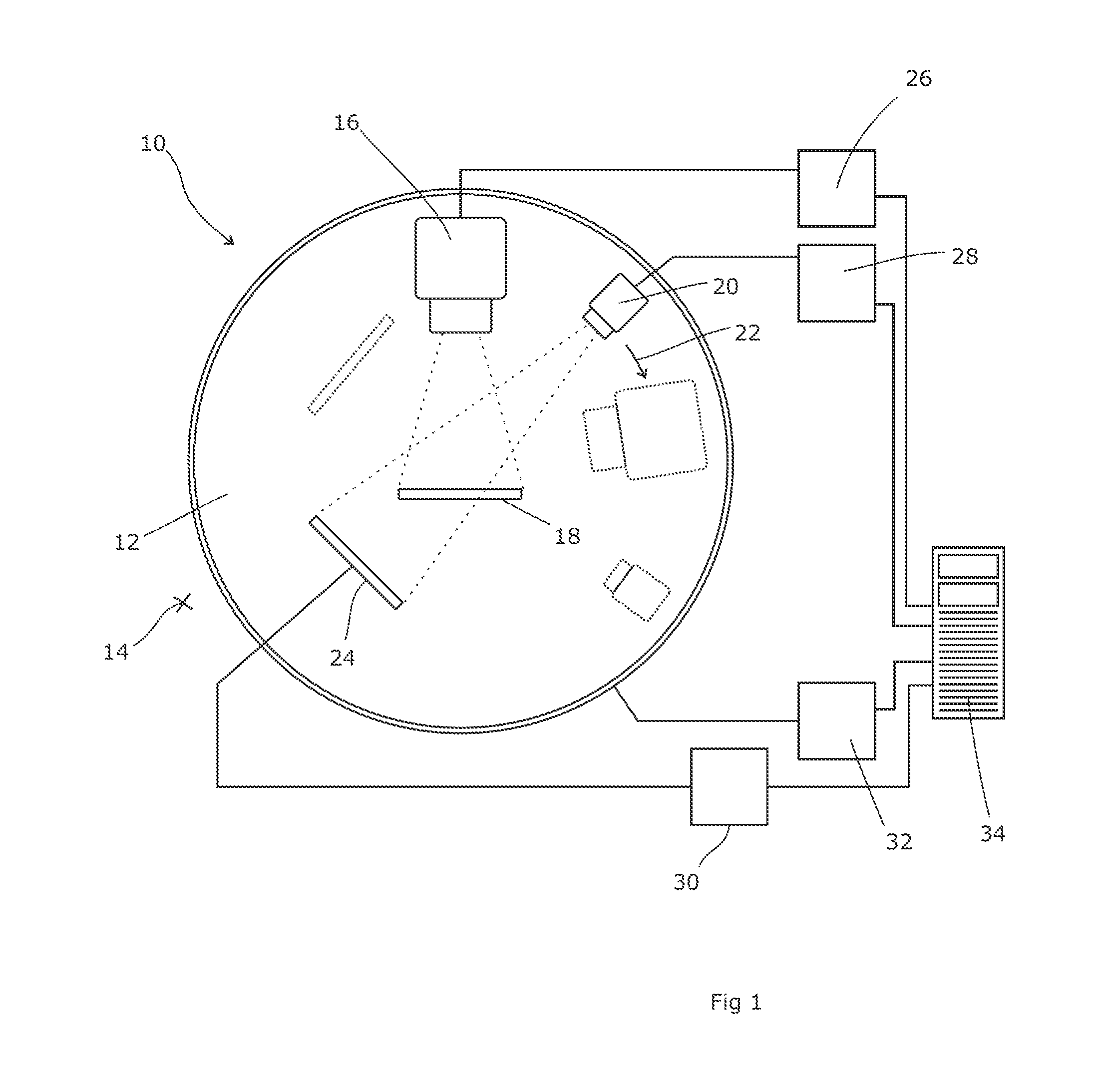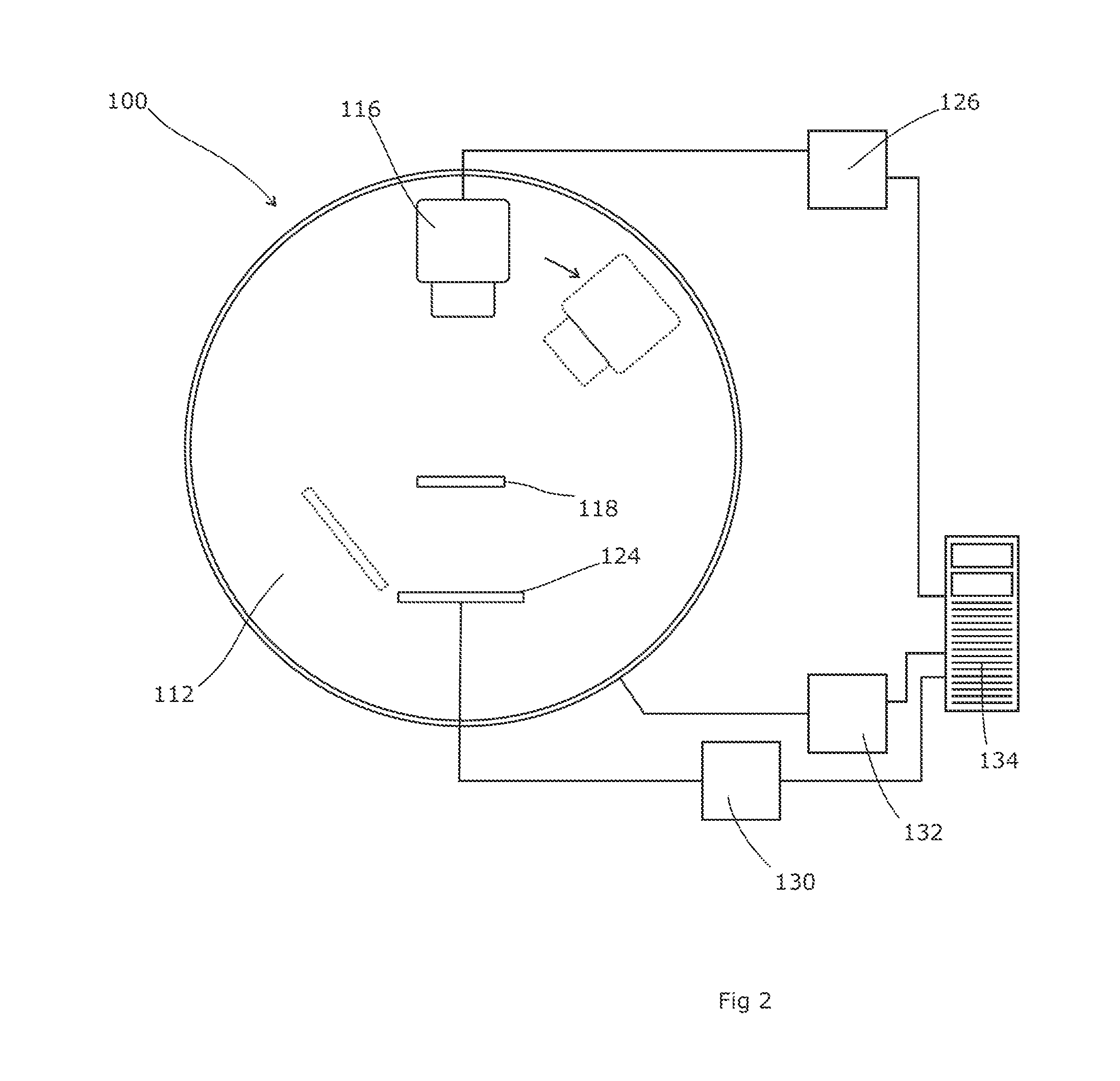Image-Guided Radiotherapy
a radiotherapy and guided beam technology, applied in the field of image-guided radiotherapy, can solve the problems of poor image quality, poor contrast between human tissue types, and the potential to cause harm to the normal healthy tissue around the lesion, and achieve the effect of limiting the cross-sectional area of the beam
- Summary
- Abstract
- Description
- Claims
- Application Information
AI Technical Summary
Benefits of technology
Problems solved by technology
Method used
Image
Examples
first embodiment
[0026]Referring to FIG. 1 which shows the first embodiment, a radiotherapy apparatus 10 comprises a support 12 which is rotatable about a central horizontal axis. Usually, the bulk of the support 12 is concealed behind a wall or false wall or covers 14 through which the support projects. A gantry projects from the support 12 and carries a therapeutic head 16 which produces a high-energy beam suitable for therapeutic purposes, directed toward the central horizontal axis. To create the beam, a linear accelerator is located within the support 12 and the gantry, ending in the therapeutic head 16. A relativistic beam of electrons from the accelerator is directed onto an x-ray target to produce a beam of high-energy x-rays in the appropriate direction. This is then filtered if necessary, such as with a flattening filter, and collimated by block collimators and multi-leaf collimators to create a therapeutically useful beam.
[0027]A patient table 18 is provided, just below the central horizo...
second embodiment
[0035]The second operating method could be put into effect using the apparatus described with reference to FIG. 1. Alternatively, it could use the apparatus of the second embodiment shown in FIG. 2. This radiotherapy apparatus 100 comprises a support 112, rotatable about a central horizontal axis, generally the same as the support 12 of FIG. 1. A single head 116 produces either a high-energy beam suitable for therapeutic purposes, or (selectably) a low-energy diagnostic beam of up to about 125 keV in energy, suitable for producing high-contrast images of human tissue. Both beams are emitted along the same axis, directed towards the isocentre.
[0036]A linear accelerator is located within the support 112 and the gantry, ending in the head 116. An adjustable-energy relativistic beam of electrons from the accelerator is directed onto an x-ray target to produce a beam of high-energy x-rays in the appropriate direction. This is then filtered if necessary, such as by a flattening filter, an...
PUM
 Login to View More
Login to View More Abstract
Description
Claims
Application Information
 Login to View More
Login to View More - R&D
- Intellectual Property
- Life Sciences
- Materials
- Tech Scout
- Unparalleled Data Quality
- Higher Quality Content
- 60% Fewer Hallucinations
Browse by: Latest US Patents, China's latest patents, Technical Efficacy Thesaurus, Application Domain, Technology Topic, Popular Technical Reports.
© 2025 PatSnap. All rights reserved.Legal|Privacy policy|Modern Slavery Act Transparency Statement|Sitemap|About US| Contact US: help@patsnap.com



